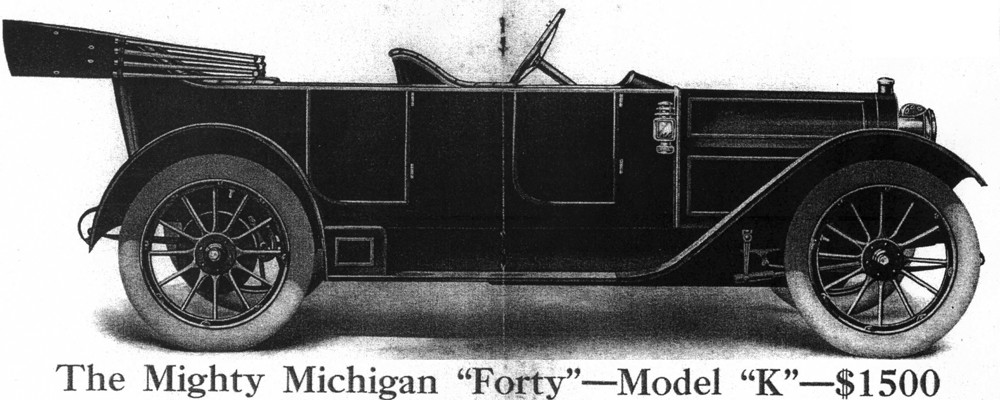Friday, August 17, 2018 at approximately 10:30 am — we started the Michigan. It idled like it should. The motor revved like it was supposed to and immediately idled down. It only seems to run on battery and did not like the flip of the switch to magneto. We’ll deal with that issue later.
We had FINALLY achieved what had been eluding us for weeks (actually over a year – if you count the first start-up back on January 6, 2017- when the over-revving probably contributed to the motor killing itself). Yes, it does make a difference when the carburetor is mounted backwards and all the linkages work in reverse. GOOD GRIEF! Philip Dickey with his mischievous Portage High School woodshop – autoshop students continue to exact their vengeance.
Short story — When we cut our deal to obtain the car from Janet’s cousin, Steve Dickey, he told us that his father, Philip, the Portage High woodshop teacher, had taken the car to school for restoration of various parts. I’ve found evidence of this at various points, including modern bearings in the drive shaft tube. (See Blog Post, “Gears & Thrust bearings & Patience) Steve warned that the differential cover was on backwards. (No, it wasn’t. But the ring gear was – See Blog Post, “Uh Oh…. That’s not a good noise”). He indicated that some of the decoration and/or paint on the radiator had been removed by overzealous student sand blasting of the front of the car. (We are still not sure what this was. Nor is there evidence of sandblasting on the radiator.) Steve had told us that some very rudimentary body work had been started on one of the front fenders. This is true. A portion of the front right fender has a new section welded in where the fender meets the engine compartment frame. However, the backwards carburetor was not something I had anticipated. And, until careful examination, would not have been suspected as an even remotely possible issue. Anyway……. all you now 70 & 80 year old Portage High shop kids have had your fun. Ha Ha. Please just let me get this car back together and on the road!































